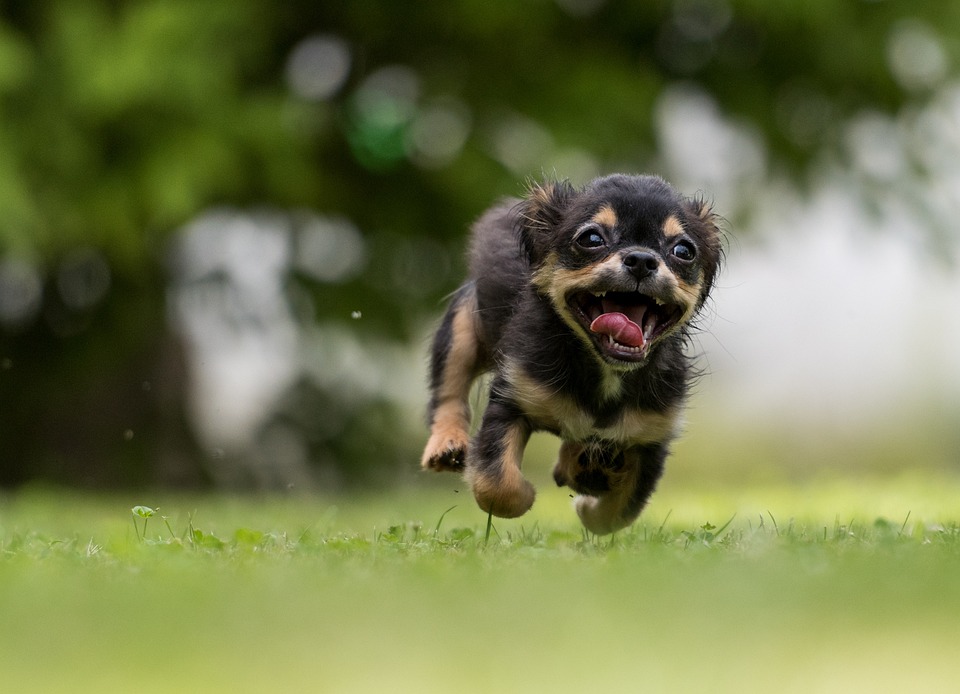*By Emily Johnson*
Introduction:
Training a dog to resist the urge of chasing cars or bicycles is crucial for their safety and the peace of mind of their owners. This article will provide you with a comprehensive guide on how to train your dog to ignore these moving objects. We will discuss effective training techniques, common challenges, and provide answers to frequently asked questions.
Understanding the Root Cause: Why Do Dogs Chase Cars and Bicycles?
Before starting the training sessions, it’s essential to understand why dogs engage in this behavior. Dogs are instinctively drawn to moving objects due to their prey drive, territorial instincts, or a desire to play. Identifying the root cause will help tailor the training to address the underlying motivation.
Step 1: Establish a Strong Foundation with Basic Obedience Training
Before tackling the issue of chasing cars or bicycles, ensure your dog has a solid foundation in basic obedience commands, such as sit, stay, and come. These commands will serve as the building blocks for more advanced training.
Step 2: Desensitization and Counterconditioning
Desensitization and counterconditioning are effective techniques to change your dog’s behavior towards cars or bicycles. Gradually expose your dog to these stimuli, starting from a safe distance, and reward calm behavior. Over time, decrease the distance between your dog and the moving objects while maintaining a positive association through treats or praise.
Step 3: Teach the “Leave It” Command
The “leave it” command is a valuable tool to redirect your dog’s attention away from chasing. Start by teaching your dog to leave an object on command, and gradually transition to using the command when encountering cars or bicycles. Consistency and positive reinforcement are key to success.
Step 4: leash Training and Proper Boundaries
Leash training is crucial when it comes to preventing your dog from chasing cars or bicycles. Use a sturdy leash and practice walking your dog in low-distraction environments while reinforcing good behavior. Gradually increase the level of distractions, always rewarding your dog’s focus on you rather than the objects of interest.
Step 5: Seek Professional Help if Needed
If you encounter difficulties during the training process or have a particularly stubborn dog, don’t hesitate to seek assistance from a professional dog trainer. They can provide specialized guidance and tailor the training to address your dog’s specific needs.
FAQs: Frequently Asked Questions
1. How long does it take to train a dog not to chase cars or bicycles?
Training duration varies depending on the individual dog and their previous training experience. It can take anywhere from a few weeks to several months. Consistency, patience, and positive reinforcement are key.
2. Can I use punishment to discourage my dog from chasing cars or bicycles?
Punishment is not recommended as it can lead to fear or anxiety in your dog. Positive reinforcement and redirecting their focus onto desired behaviors are more effective and humane approaches.
3. What if my dog’s prey drive is too strong to overcome?
In cases where a dog’s prey drive is exceptionally strong, additional management techniques, such as using a leash or a securely fenced area, may be necessary to ensure your dog’s safety.
4. Is it possible to train an older dog not to chase cars or bicycles?
Although training an older dog may require more patience and consistency, it is certainly possible to modify their behavior. Consult a professional trainer for guidance tailored to your dog’s age and specific needs.
Conclusion:
Training a dog not to chase cars or bicycles requires time, patience, and consistent effort. By implementing the techniques discussed in this article and seeking professional help if needed, you can help your dog overcome this dangerous behavior. Remember, the safety of your dog and others on the road is paramount.









